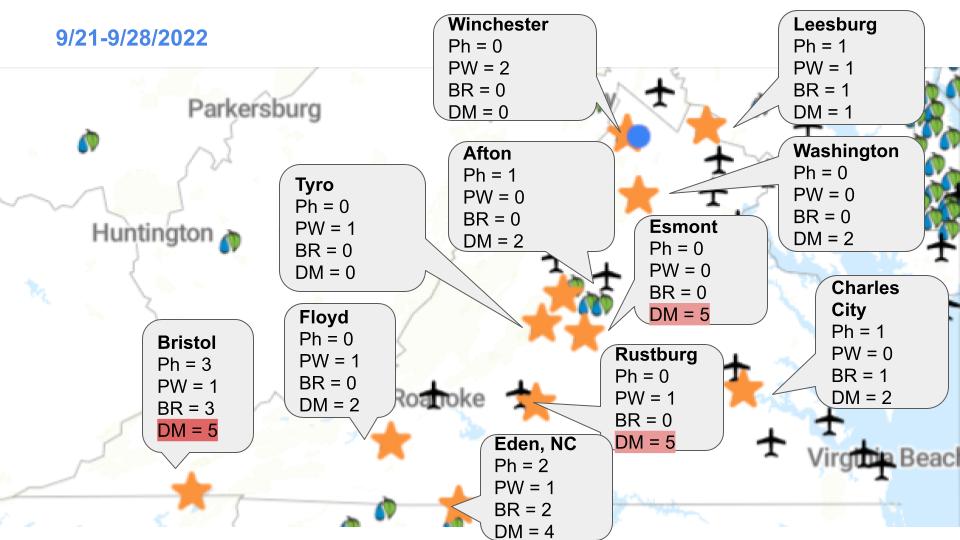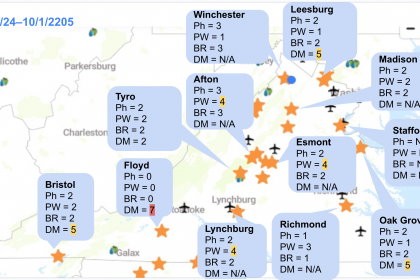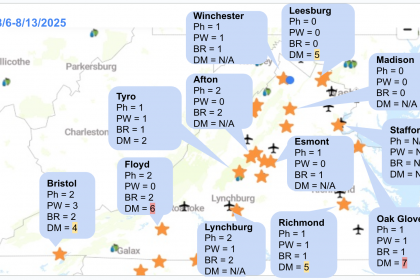Here’s a snapshot from the last week, showing the number of days with the risk of each disease: Ph = Phomopsis, PW = Powdery mildew, BR = Black rot, and DM = Downy mildew. This information was made available through Wine Board-funded the Sentinel Vineyard project.

The image above is just a summary of the past 7 days. Please visit https://newa.cornell.edu/ to obtain more detailed information. You can check daily weather data as well as disease and insect pest model results including forecasted risks. We paid the annual fee so that growers in Virginia can freely access NEWA.
It looks like we had a nice dry week. The lack of risks of black rot and Phomopsis (NOTE: they are not critical diseases at this time of the season), but a high number of downy mildew risk days in some stations indicate the high risk of spore production due to high relative humidity at night. Sometimes heavy dew (= moisture running off from leaves) can be enough to spread the downy mildew pathogen.
If you decide to keep your clusters hanging for this weekend when we are expecting rain from hurricane Ian, it is probably a good idea to protect your clusters. What we recently applied was a combination of a phos acid and polyoxin-D in a hope that it will provide protection against downy mildew and Botrytis.
The list of short PHI (< 7-day) materials is here (pdf format).
The risk information above is just output from the model, and the spray decision needs to be based not only on the weather condition but on the cultivar and history of the disease(s) in your vineyard.
If you are in an unfortunate situation where downy mildew was well established (i.e., you can see it everywhere), please use captan or copper to keep your healthy leaves protected. Clusters are resistant to new infection at this point, but if you do not protect leaves, downy mildew can defoliate leaves. Please do not use Revus, Ranman, or Ridomil which are prone to develop fungicide resistance.






This Post Has One Comment